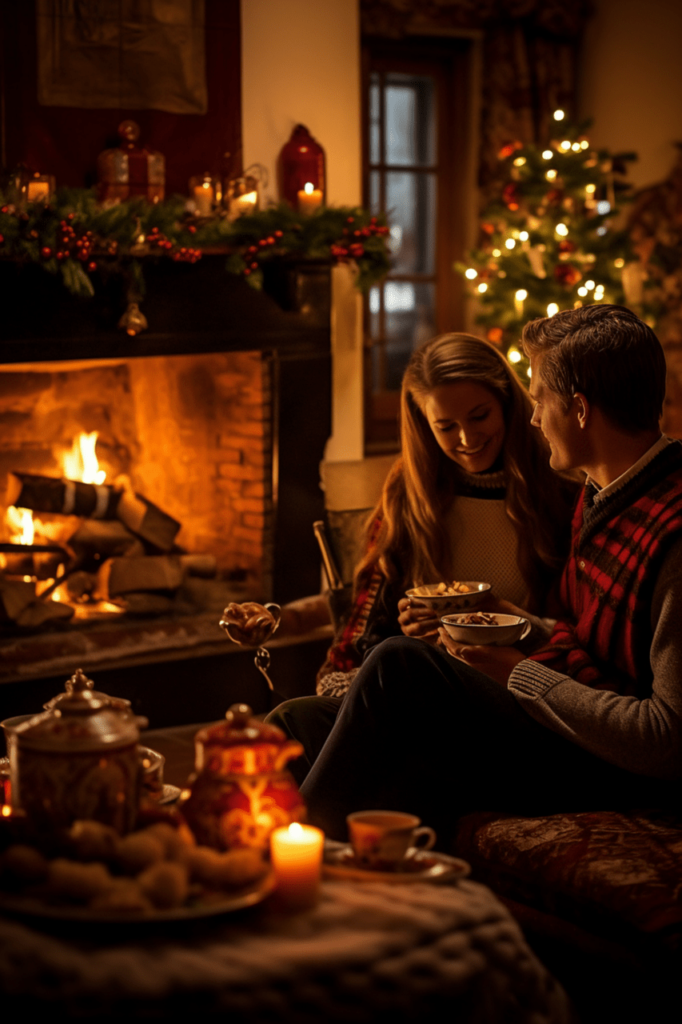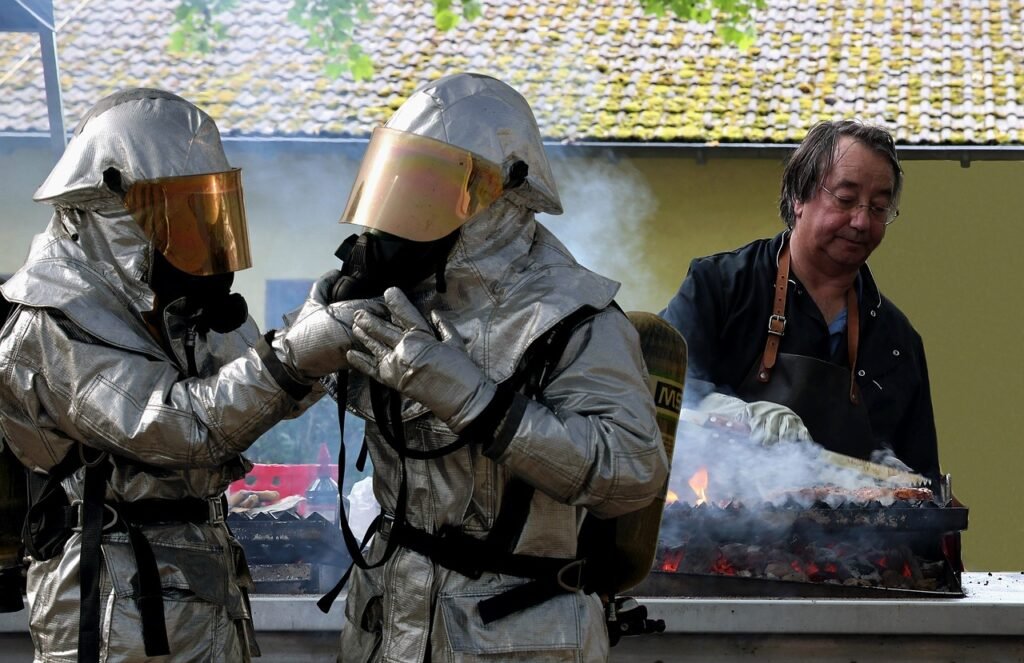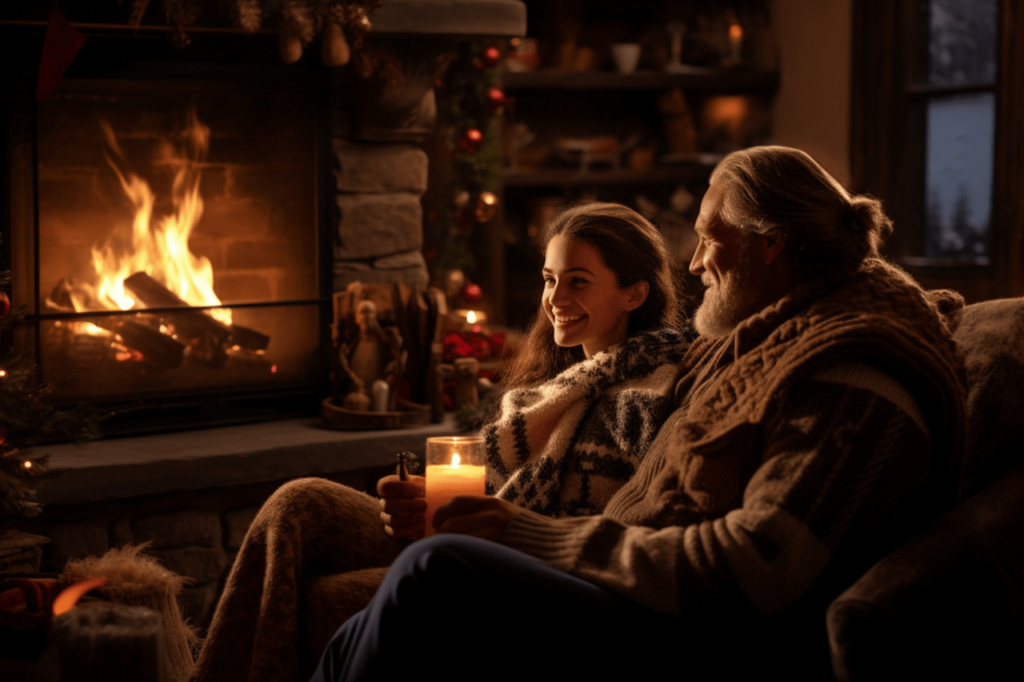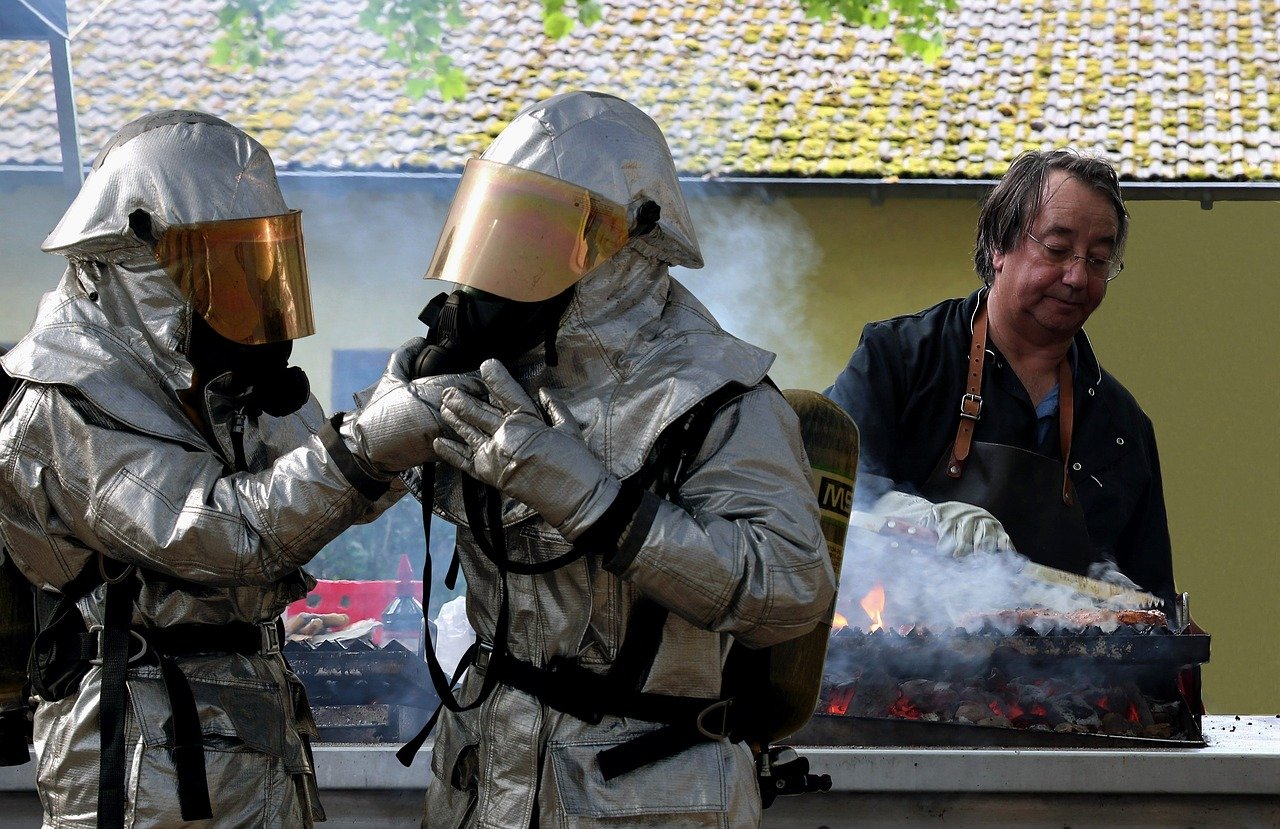Picture this: a cozy winter evening, curled up on the couch next to a crackling fireplace, with a warm mug of hot chocolate in hand. Sounds idyllic, doesn’t it? However, it is crucial to ensure that the joy and warmth of a fireplace don’t come at the cost of safety. In this article, we will explore some proactive measures you can take to ensure the safety of your fireplace, creating a happy and secure home for you and your loved ones. From regular maintenance to childproofing, let’s delve into the world of fireplace safety and learn how to keep those flames both inviting and safe.
Inspecting the Fireplace
When it comes to fireplace safety, regular inspection is an essential step to ensuring the well-being of your home and your loved ones. By inspecting your fireplace, you can identify potential issues and address them before they escalate into major problems. There are three key areas to focus on during your inspection: checking for damage, clearing debris, and inspecting the chimney.
Checking for Damage
Start your inspection by carefully examining the fireplace for any signs of damage. Look for cracks or crumbling in the bricks or mortar, as these can indicate structural problems. Pay attention to the damper as well, ensuring it opens and closes smoothly. If you notice any damage, it’s crucial to consult a professional for repairs in order to maintain the safety and efficiency of your fireplace.
Clearing Debris
Over time, debris can accumulate in your fireplace, posing a potential hazard. Before you start using it, remove any ashes or leftover wood from previous fires. Use a fireplace shovel or metal scoop to scoop the ashes into a metal container, ensuring they are cool to the touch before disposal. Additionally, inspect the flue for any obstructions, such as bird nests or loose debris, and remove them carefully.
Inspecting the Chimney
The chimney plays a vital role in fireplace safety as it directs smoke and harmful fumes out of your home. To ensure it is functioning properly, it’s necessary to inspect the chimney regularly. Look for any signs of damage or wear, such as loose bricks or cracks in the mortar. Additionally, ensure the chimney cap is in good condition and securely fastened. If you notice any issues, it’s advisable to seek professional assistance to repair or, if necessary, replace your chimney.
Fireplace Maintenance
To keep your fireplace operating at its best and ensure optimal safety, regular maintenance is crucial. There are several maintenance tasks you should be mindful of, including cleaning the firebox, removing creosote, and checking ventilation.
Cleaning the Firebox
Cleaning the firebox is an integral part of fireplace maintenance. Start by removing all ashes and leftover wood, as these can hinder proper airflow. Then, use a soft brush or vacuum cleaner to remove any dust or debris that may have accumulated on the walls and floor of the firebox. Regularly cleaning the firebox not only enhances the appearance of your fireplace but also prevents the buildup of flammable materials.
Removing Creosote
Creosote is a byproduct of burning wood that can accumulate in your chimney. This substance is highly flammable and poses a significant fire hazard if not properly addressed. Regularly inspect the chimney for the presence of creosote and, if necessary, have it professionally cleaned by a certified chimney sweep. Removing creosote not only reduces the risk of a chimney fire but also improves the efficiency and performance of your fireplace.
Checking Ventilation
Proper ventilation is vital for the safe operation of your fireplace. Ensure that the vents are unobstructed and functioning correctly. During your maintenance routine, inspect the vents for any blockages caused by debris or bird nests. Clean or remove any obstruction you find to guarantee proper airflow and prevent the accumulation of harmful gases.

This image is property of pixabay.com.
Firewood Selection
The quality and type of firewood you use can significantly impact the safety and efficiency of your fireplace. Careful consideration should be given to choosing the right wood and properly seasoning it.
Choosing the Right Wood
When selecting firewood, it’s important to choose hardwoods like oak, maple, or birch. Hardwoods burn longer and produce more heat compared to softwoods, making them ideal for keeping your home warm during the colder months. Avoid using green or unseasoned wood, as it creates more smoke and contributes to the buildup of creosote. Ensuring the wood you use is properly seasoned is essential for a safe and efficient fire.
Seasoning the Firewood
Seasoning firewood involves properly drying it to reduce its moisture content. Green or freshly cut wood holds a significant amount of moisture, which can hinder the combustion process and lead to inefficient burning. To season firewood, split it into smaller pieces and allow it to dry for at least six months in a well-ventilated area. Properly seasoned firewood burns more cleanly and emits less smoke, reducing the risk of chimney fires and improving air quality.
Fireplace Accessories
Enhance the functionality and safety of your fireplace by incorporating the right accessories into your setup. Fireplace screens, grates, and tools are essential components that can elevate your fireplace experience while ensuring safety.
Fireplace Screens
A fireplace screen acts as a protective barrier, preventing sparks and embers from escaping the firebox and potentially causing accidents. It also provides an added layer of protection against accidental contact with the flames. Choose a high-quality screen that fits securely against the opening of your fireplace to effectively contain sparks and protect your home and loved ones.
Fireplace Grates
Fireplace grates are designed to hold the firewood off the ground, allowing air to circulate freely and assisting combustion. They also help prevent rolling logs from falling out of the firebox and create a stable base for the fire. Invest in a sturdy grate that suits the size and design of your fireplace to promote safer and more efficient burning.
Fireplace Tools
Equipping yourself with the right set of fireplace tools is indispensable for maintaining a safe and functional fireplace. A typical set usually includes a poker, a shovel, tongs, and a brush. These tools allow you to adjust the logs, clean the firebox, and handle the fire safely. Prioritize high-quality tools with heat-resistant handles to ensure your safety while tending to your fireplace.

This image is property of pixabay.com.
Fire Safety Precautions
Fire safety should always be a top priority when enjoying the warmth and ambiance of your fireplace. By implementing a few simple precautions, you can significantly reduce the risk of fires in your home.
Keeping Flammable Objects Away
To prevent accidental fires, it’s essential to keep all flammable objects, such as furniture, drapes, and decorations, at a safe distance from the fireplace. A general rule of thumb is to maintain a minimum clearance of three feet around the fireplace. This practice minimizes the risk of sparks or embers igniting nearby items and helps ensure a safe environment.
Using a Fire Extinguisher
Having a functional fire extinguisher within reach is a critical fire safety precaution. Familiarize yourself with its operation and keep it in an easily accessible location near the fireplace. Make sure the extinguisher is suitable for use on fires involving wood and paper materials. In the event of a small fire, quickly and safely extinguishing it can prevent it from escalating into a more significant incident.
Having a Fire Escape Plan
Although fires are rare, it’s essential to be prepared for emergencies. Develop a fire escape plan for your home and ensure all family members are familiar with it. Identify primary and secondary emergency exits, establish a designated meeting point outside, and practice the escape plan regularly. By being proactive in your fire safety measures, you can protect your loved ones and ensure a swift and safe evacuation if needed.
Carbon Monoxide Monitoring
Carbon monoxide (CO) is an odorless and invisible gas that can be deadly when inhaled in high concentrations. It is produced when fuels, such as gas, oil, and wood, burn incompletely. To safeguard your household from this silent threat, installing carbon monoxide detectors and regularly checking their functionality is crucial.
Installing Carbon Monoxide Detectors
Place carbon monoxide detectors on every level of your home, particularly near bedrooms or sleeping areas. Follow the manufacturer’s instructions for installation and ensure the detectors are mounted at least five feet above the floor. Carbon monoxide is slightly lighter than air, so mounting them at this height allows for earlier detection of any potential leaks.
Checking their Functionality
Regularly test your carbon monoxide detectors to ensure they are working correctly. Most detectors have a test button that allows you to verify their functionality. Follow the manufacturer’s recommendations for testing frequency, usually at least once a month. Additionally, replace the batteries as needed and replace the entire unit according to the manufacturer’s suggested lifespan, typically every five to seven years.

This image is property of pixabay.com.
Child and Pet Safety
If you have children or pets in your home, it’s essential to take additional safety measures when using your fireplace. By implementing child and pet safety precautions, you can enjoy the warmth and beauty of your fireplace while keeping everyone protected.
Installing Safety Gates
Installing safety gates helps create a physical barrier between your children or pets and the fireplace, preventing them from getting too close. Choose a gate specifically designed for fireplace use, ensuring it is securely installed and difficult for children or pets to open. Safety gates provide peace of mind, allowing you to enjoy your fireplace without constant worry about their proximity.
Using Fireplace Guards
Fireplace guards, also known as hearth guards, are protective barriers that surround the edges of your fireplace, acting as a buffer against accidental contact with the hot surfaces. These guards are typically made of heat-resistant materials and help prevent burns and injuries. Ensure the guards are securely attached and cover all sharp edges and corners to provide maximum safety for your children or pets.
Supervising Children and Pets
While safety gates and guards add an extra layer of protection, it is crucial to supervise children and pets whenever the fireplace is in use. Teach children about the potential dangers of fire and ensure they understand that the fireplace is not a play area. Keep a vigilant eye on pets to prevent them from accidentally knocking down screens or venturing too close to the flames. Constant supervision ensures the safety of your loved ones and prevents any unforeseen accidents.
Proper Use of Fire Starters
Fire starters are a convenient and efficient way to ignite your fireplace, but they must be used properly to maintain safety. Whether using traditional fire starters or modern alternatives, understanding their correct usage is essential.
Avoiding Accelerants
Avoid using accelerants, such as gasoline, kerosene, or lighter fluid, to start your fire. These substances can cause sudden and uncontrollable flare-ups, posing a significant risk of injury or property damage. Instead, use appropriate fire starters designed for fireplace use, such as newspaper, dry kindling, or commercially available fire starter logs. These methods provide a safer and more controlled ignition process.
Using Safe Fire Starters
Fire starters specially made for fireplaces offer a safe and reliable way to begin your fires. They are designed to burn cleanly and effectively, providing an optimal start to your fire while minimizing the generation of harmful fumes or residue. Follow the manufacturer’s instructions when using fire starters, and always keep them out of reach of children and pets.
Regular Inspections and Professional Services
While diligent home maintenance is essential, some tasks are best left to professionals. Scheduling regular inspections and employing certified chimney sweeps for specific services are vital steps in ensuring the long-term safety and performance of your fireplace.
Scheduling Annual Inspections
In addition to your own regular inspections, it is recommended to schedule professional inspections at least once a year. Certified chimney sweeps have the expertise to identify potential issues that might be overlooked during a routine inspection. They can thoroughly assess the condition of your fireplace, chimney, and vents, and recommend any necessary repairs or maintenance to ensure optimal safety.
Hiring Certified Chimney Sweeps
When it comes to chimney cleaning and maintenance, it’s crucial to hire certified chimney sweeps who adhere to industry standards and best practices. These professionals have the necessary training and experience to clean your chimney thoroughly and address any underlying issues. They will remove dangerous creosote buildup, inspect for damage, and ensure your chimney is functioning correctly. Hiring certified chimney sweeps guarantees a high level of expertise and a safe fireplace for you and your family.
Emergency Preparedness
Even with the most stringent safety measures in place, it’s crucial to be prepared for emergencies. Familiarize yourself with fire emergency procedures and ensure you have the necessary resources readily available.
Knowing Fire Emergency Numbers
Take note of the emergency contact numbers for your local fire department and keep them in a visible and easily accessible location. In a fire emergency, quick access to these numbers is essential for promptly notifying the authorities and requesting assistance. Prioritize the safety of yourself and your loved ones and remember to stay calm and follow the instructions of emergency personnel.
Keeping Emergency Exits Clear
Maintaining clear and unobstructed emergency exits is crucial for a safe evacuation in case of a fire. Regularly check the pathways leading to your home’s exits and ensure they are free from clutter, furniture, or any other obstacles that may impede a swift escape. Educate all family members about the importance of keeping these exit routes clear and reinforce the practice to create an effective emergency preparedness plan.
In conclusion, fireplace safety is of utmost importance to maintain a secure and comfortable home environment. Regularly inspecting your fireplace, properly maintaining it, and following safety precautions are essential steps to prevent accidents and ensure the longevity of your fireplace. By implementing these proactive measures, you can enjoy the warmth and beauty of your fireplace with peace of mind, knowing that you have taken the necessary precautions to protect yourself, your loved ones, and your home from potential hazards. Stay safe and cherish the cozy moments your fireplace provides.




